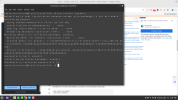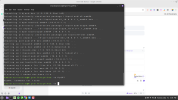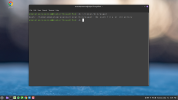Emanate Presence
Active Member
I can vouch for the commands to install Python's PIP. Those I know to be accurate. (You can verify this by searching for other tutorials, as I'm sure they exist.)
I can NOT vouch for PyGPT's properly installing with PIP. From the looks of things, that threw an error - but I have no idea how far along you are in installing/enabling Python's PIP.
You should have Nano available. If you do not, you'll need to install it. In the article, where Nano is referenced, there will be a link that will help you ensure that Nano is properly installed.
You're trying to do something that's a little advanced. That's fine, but it means knowing what you're doing or following the instructions. I can only vouch for the first two articles - those are correct and heavily reviewed by others here when shared.
If I'm following your progress properly, PyGPT is throwing an error during the installation process. I can't fix that. If it had been installed properly, and you'd completed both articles, you'd simply start the application by enteringpygptinto the terminal. If you didn't complete the 2nd article, you'd enter~/local/bin/pygptinto the terminal (probably) to start the application.
But, there's an error (in red text) when you try to install it. That needs to be resolved, I'm pretty sure.
Thank you for writing. I went through the whole process of installing PIP and then PYGPT. A Lot of files downloaded in Terminal. I was extremely careful to follow instructions to the letter and double check. That doesn't mean I didn't miss something.
I am not sure where I am with it either, but entering pygpt into the terminal returned 'Not Found.'
Seems Nano is available, it showed up in Terminal.
I wrote to Marcin, the developer, even sent him a cup of coffee as a gesture of goodwill. Sure, like most, he is busy and a prompt answer cannot be expected.
Well, I love the idea of having PyGPT on the Linux, but cannot let myself feel pressured by it, and have to let it go until something moves.
Your time is valuable too, and your response is appreciated.




